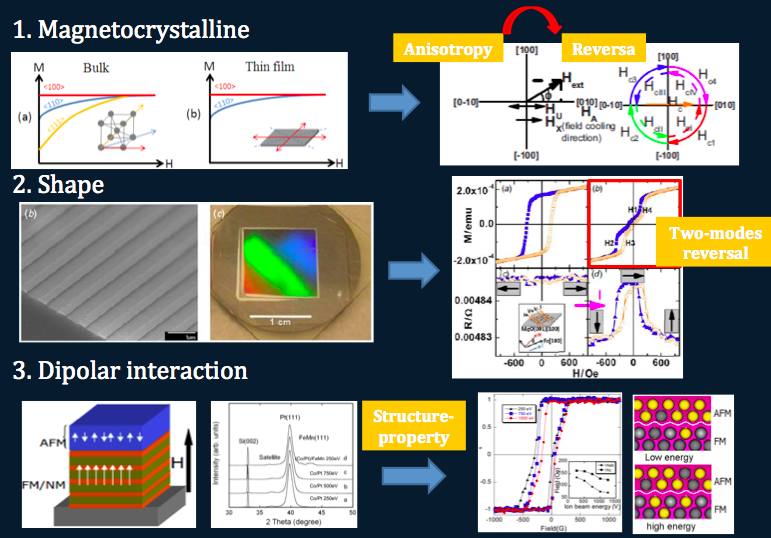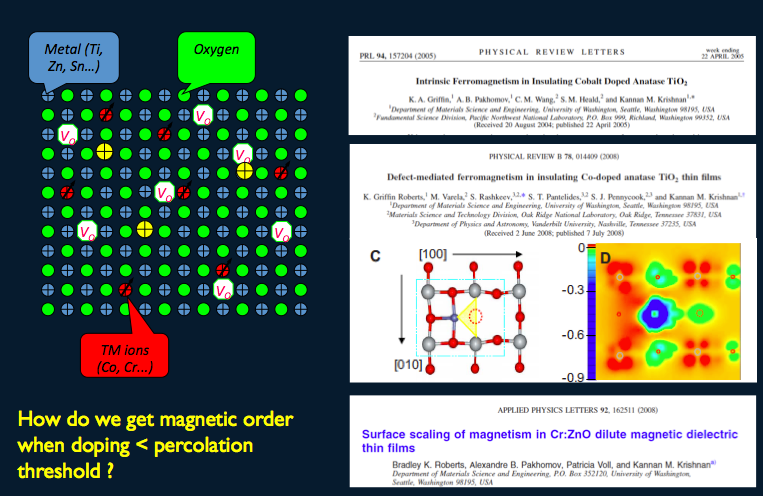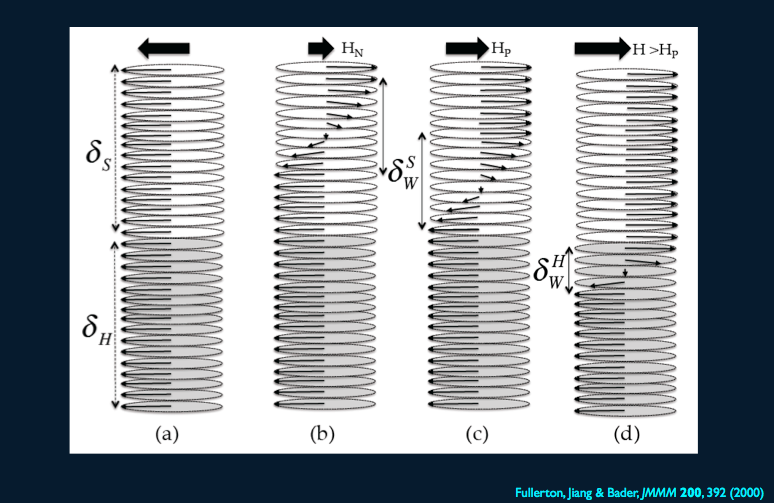The exchange bias effect has been systematically studied in our group due to its applications in magnetic storage industry. Well-defined growth recipes for both in-plane and out-of-plane exchange bias have been established, and the effects from different parameters on the exchange bias, as well as the related properties were investigated, including layer thicknesses, temperature, and growth choices, etc. Most importantly, we have been focusing on the competing effects on exchange bias from sample properties (magnetocrystalline anisotropy), structures (shape), and long-range dipolar interactions. Advanced characterizations were also used to direct reveal the interfacial spin structures.
Competing magnetocrystalline anisotropy and exchange bias was studied in epitaxial Fe/IrMn and Fe/MnPd bilayers, with the collinear and spin-flop coupling types, respectively. Specifically, the ferromagnetic spin behavior (domain wall movement) has been quantitatively understood by a newly-developed ‘Domain-wall nucleation’ model; and the critical length of the single-crystal antiferromagnet, as well as its contributions to the exchange bias were unprecedentedly unraveled.

The shape effect to the exchange bias was studied in micro- and nano-structured samples made by lithography. Wire-type samples showed confined magnetic reversal behaviors, i.e. single domain-wall nucleation and propagation along the wire. The reversals are controlled by both the magnitude and relative orientation of the uniaxial and unidirectional anisotropies. The ring-type samples give rise to unique vortex and onion magnetic states. Asymmetric reversals were found due to their interactions with the unidirectional exchange bias.
In the out-of-plane geometry, the short-range exchange coupling competes with a long-range dipolar interaction, and the induced uniaxial anisotropy overcomes the demagnetization energy to establish perpendicular anisotropy. In our study on Co/Pt multilayered systems, the structure-property correlations i.e., growth, interface, reversal, and spin dynamics have been systematically characterized, via AMR, MFM/VSM, and FMR.
Ref:
[1] P. Blomqvist, K. M. Krishnan, and H. Ohldag, Phys. Rev. Lett. 94, 107203 (2005)
[2] S. Bruck, G. Shutz, E. Goering, X. Ji, and K. M. Krishnan, Phys. Rev. Lett. 101, 126402 (2008)


